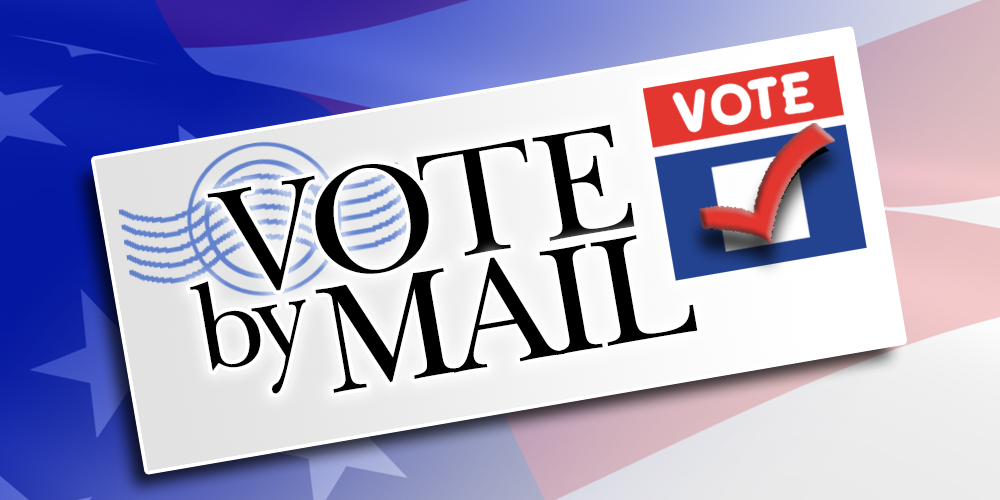Still getting better, still some room to improve.
The statewide ballot rejection rate dramatically reduced to 2.7 percent in the general election this fall after it had skyrocketed to six times that in the primaries following the introduction of a Republican-backed change to mail ballot ID requirements, state data shows.
“That’s obviously a big improvement,” said Sen. Paul Bettencourt, a Houston Republican who helped author the law that instituted the new rule. “I expect that even 2.7 will continue to go down as everyone understands exactly how the system works.”
Senate Bill 1 — passed by Texas Republicans in 2021 in the name of election integrity — requires voters to include a state ID number, such as a driver’s license or partial Social Security number when applying for a mail-in ballot and when submitting it. The ID number on the ballot has to match what is on the voter’s registration record, a detail many voters did not recall.
Remi Garza, the elections administrator for Cameron County and president of the Texas Association of Elections Administrators, said he was pleased to see the decrease statewide (his county’s rate was 1.34 percent). But at the same time, he said he still sees room for improvement.
“I think it’s a great indication of the hard work that election offices across the state are doing,” Garza said. “I’m glad the information that has been distributed by everyone has had an impact on bringing the rejection rate down, but obviously it’s still way too high. We need to work harder to communicate with the vote-by-mail applicants on how to assure their vote is going to be counted.”
Sam Taylor, spokesman for the secretary of state’s office, added that the office launched a bilingual voter education campaign, updated the design of the mail ballot envelopes to highlight the ID field in red, sent out example inserts to remind voters of the ID rule and produced an educational video series on voting by mail.
[…]
This latest 2.7 percent rate brings the state nearly back to normal levels. A federal survey estimated the state’s ballot rejection rate was 1.76 percent in the 2018 midterm and 1.5 percent in the 2014 midterm.
Preliminary numbers last month showed about 4 percent of ballots were denied during the general election this November, or about 10,000 among most of the state’s largest counties. That was before the deadline for voters to correct errors on their ballots, however. In total, about 9,300 ballots were finally rejected.
Harris County, the state’s largest county with almost 3 million voters registered, lagged behind most large counties with about 4.5 percent of ballots tossed.
Nadia Hakim, deputy director of communications for Harris County Elections, in a statement Thursday attributed the difference to the county’s size.
“We have significantly more voters over a greater area than our neighbors statewide,” Hakim said. “Dallas County is the second-largest, and Harris County has over a million more registered voters.”
Dallas County’s rejection rate was 1.76 percent, per the state data. At least two other large counties had higher rates than Harris — Fort Bend at 5 percent and Bell at 5.5 percent.
See here and here for some background. This is an improvement, and the extra time at the end to make corrections helped, but screw Paul Bettencourt and his rationalizations. If we had to pass this provision – and there’s no reason to believe it has actually done anything to improve election security – we needed to delay it long enough for the education and communication efforts made by county officials and the Secretary of State to take place first. If that had been done, then maybe we wouldn’t have had such and embarrassing and shameful number of rejections in the first election where this was in effect. Bettencourt and the rest of the Republicans didn’t care about that, They don’t get to feel good, or to try to make us feel good, about the eventual improvements made thanks to the hard work of election officials, candidate campaigns, and coordinated county campaigns.
I will also note that I don’t know where the Chron got their 4.5% figure from. Going by the reconciliation report, there were 2,672 mail ballots rejected out of 64,259 total mail ballots. That’s a 4.16% rejection rate. Even if you incorrectly use 61,264 (the total number of mail ballots successfully cast) as the denominator, that’s a 4.36% rejection rate, still less than the 4.5% number cited in the story. Maybe they did that math and then “rounded up” from there, I don’t know. However they got it it, it’s wrong.
Speaking of the reconciliation report, the numbers there are a little off from what we can see elsewhere. The form says that 80,995 mail ballots were sent, which is 579 more than what the final early vote report said. That report is not “official”, though, so perhaps there’s a bit of slack in there. Since the question came up in an earlier comment, I think the 19,486 figure for “Mail ballots not returned by voters” must include those 2,672 rejected ballots, as technically they weren’t returned. The difference between those two figures is 61,509, which is pretty accurate for the mail ballots cast total. Going by the official canvass, there were 61,264 mail ballots cast, not 61,509. It’s a small difference, but I don’t know what accounts for it. Maybe some provisional ballots were mail ballots? I don’t know. But again, it’s close enough that I’m not too fussed by it. I strongly suspect that the 6,557 “Mail ballots surrendered” are also contained within the “Mail ballots not returned” figure, as again they were technically not returned. I blame any confusion here on the Lege for not requiring that definitions of these terms be included on the report. Anyway, I hope I have lessened the confusion a bit rather than add to it. Let me know if you have any questions.

